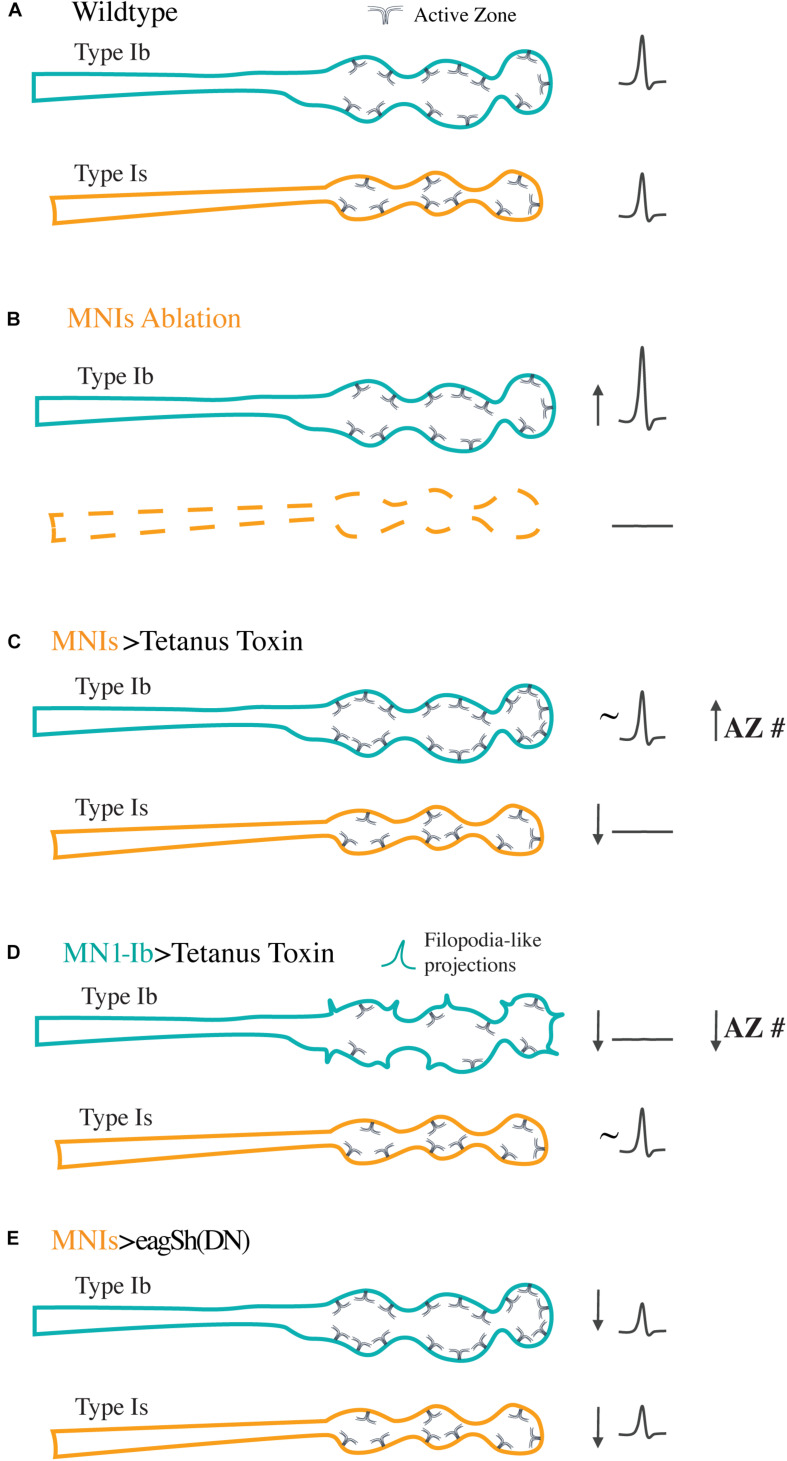FIGURE 3.
Synaptic plasticity following manipulation of the activity or presence of tonic Ib or phasic Is motoneurons. Diagrams represent the responses of Ib (teal) and Is (orange) motoneurons co-innervating the same muscle following the indicated manipulations. (A) For control Ib and Is terminals at muscle 1, the two inputs provide similar synaptic drive to the muscle as represented by the similar evoked excitatory junctional potentials (eEJPs) recorded from the muscle upon stimulation of either input (right). Ib NMJs contain more AZs than their Is counterparts, with an overall lower Pr per AZ. (B) Following ablation of the Is motoneuron with the Reaper cell death gene, the Ib motoneuron compensates by increasing the amount of neurotransmitter it releases without changes to AZ number. In contrast, ablation of the Ib motoneuron does not alter the structure or function of the co-innervating Is input. (C) Silencing the Is motoneuron with tetanus toxin results in a compensatory structural response in the co-innervating Ib input that arises from an in increase in AZ number. No structural changes are found in the silenced Is. (D) Silencing of the tonic Ib neuron results in reduced output, decreased AZ number, and increased filopodia-like projections in Ib with no compensatory response in the co-innervating Is input. (E) Increasing activity of the Is motoneuron by overexpressing dominant negative K+ channels to elevate overall firing rates results in uniform downscaling of evoked release in both the Ib and Is inputs as a compensation mechanism.

